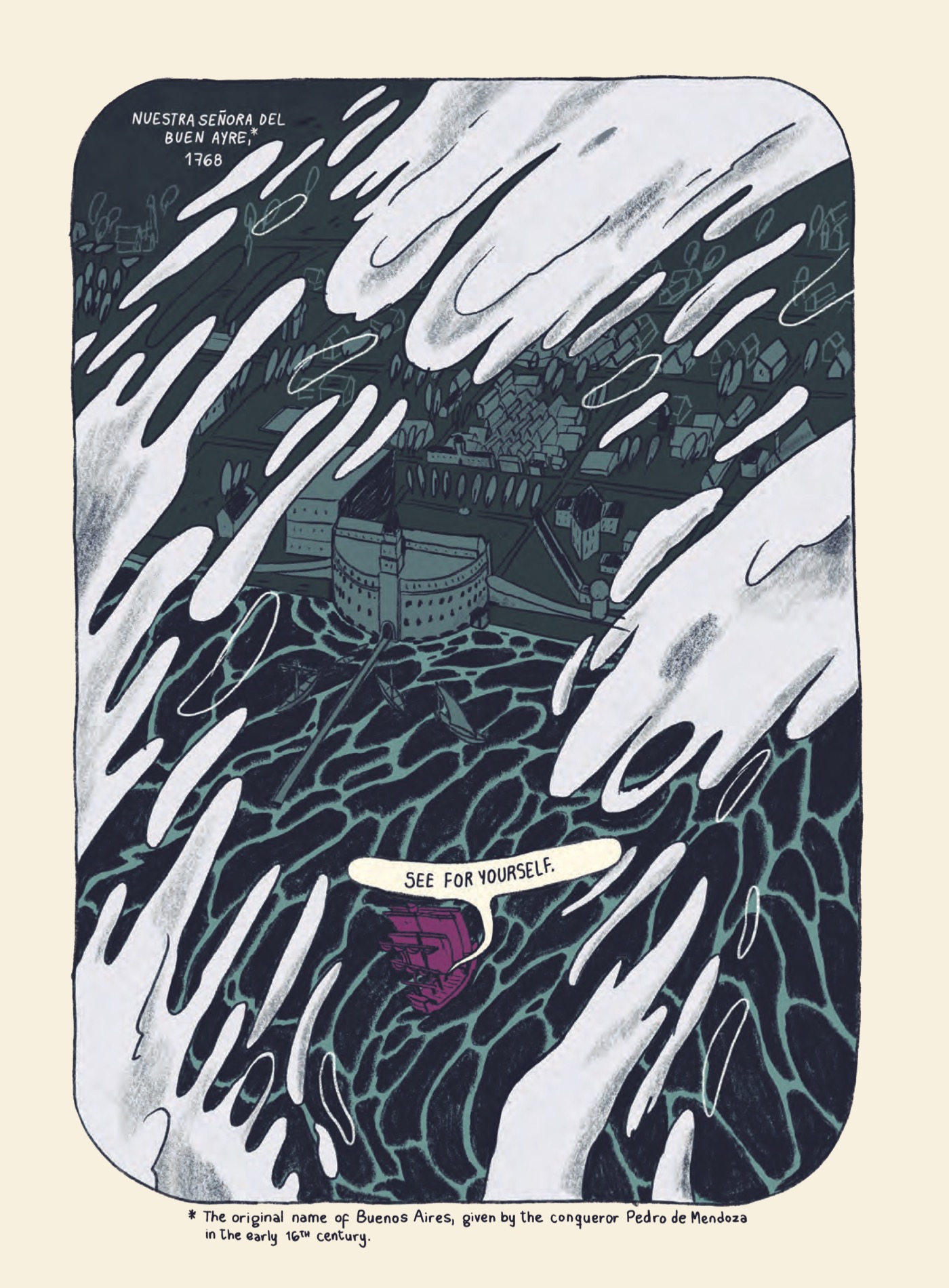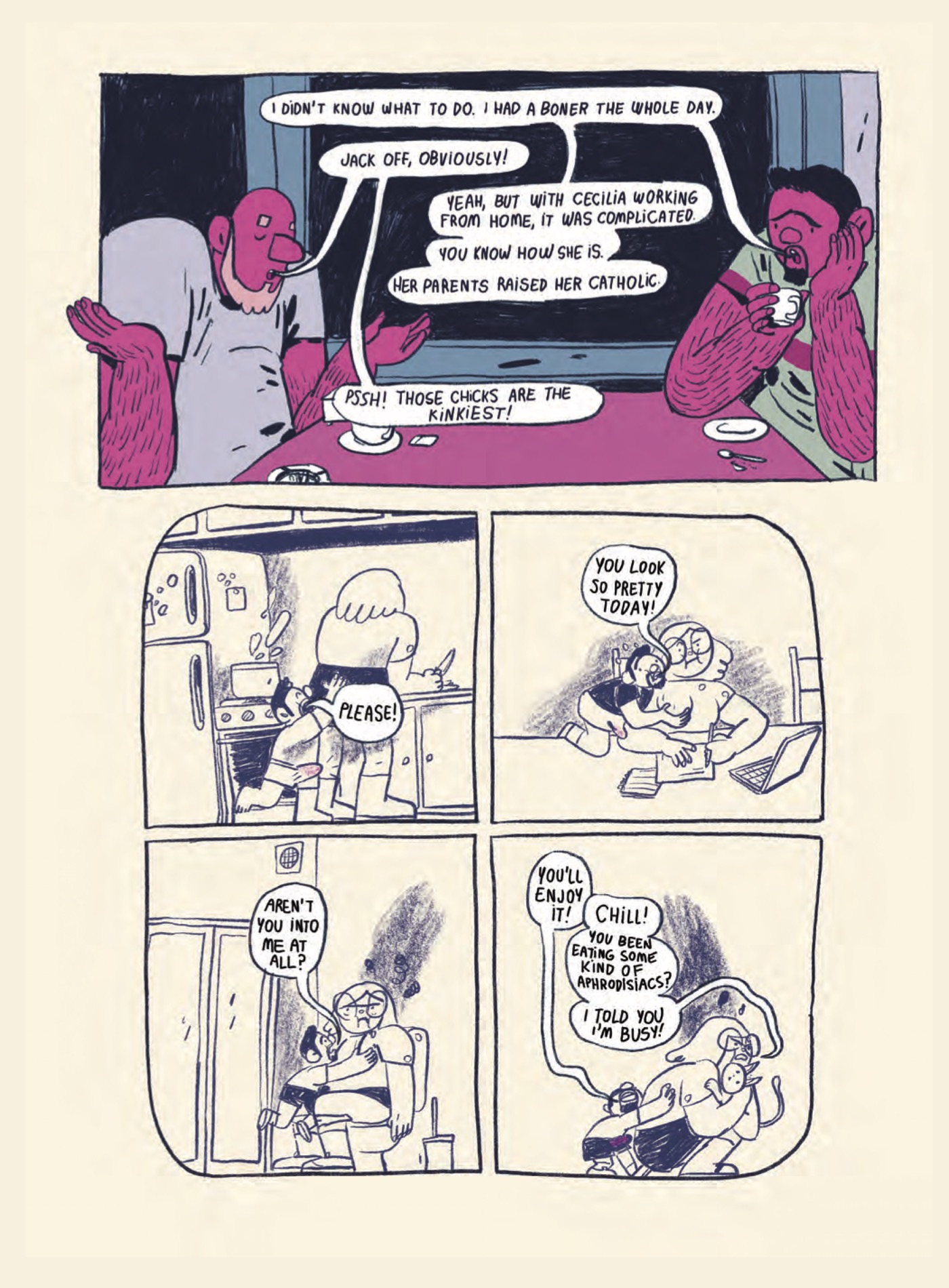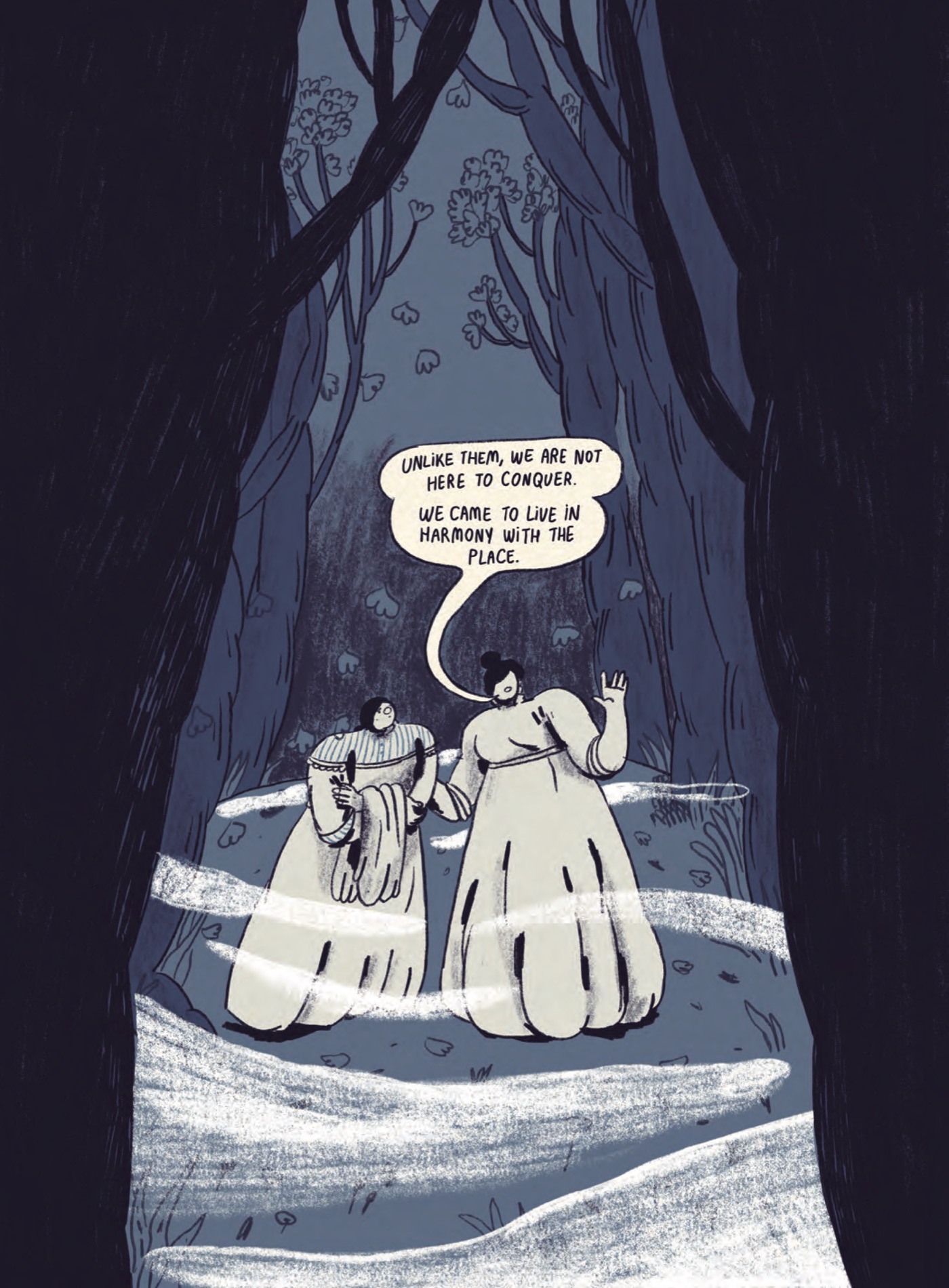No supernatural interference is needed to make you want to keep reading this book, its pages generate enough excitement of their own to keep you ravenously flipping. True to the title, it contains plenty of occult goings on, and some sinister stuff as well, as Sole Otero takes us through a wide panorama of three sisters and their goat, and how their legacy affects the various communities around them. Over a good 250 years or so too, as the book begins in 1768, and in a quite wonderful way as thick clouds part to reveal the approaching Argentinian shoreline as this quartet is set to arrive in the New World. Spread out over four pages, this unveiling has the feel of a magic spell coming to fruition.

From there we get eight further tales, jumping around the timeline, all interconnected by these sisters and how they’ve gained power in their adoptive homeland. We see their dark influence but rarely glimpse the women themselves. When we do, their faces are almost always obscured, Otero showing us only the barest of features when necessitated by a mouth speaking. We’re given a much better sense of their goat. Pinkish-purple, white eyes in a mask of black fur, extra-long horns, radiating pure menace whilst remaining absolutely silent. It's genuinely super creepy. And it could be said this goat holds the entire saga together.
While almost all regard the sisters as, if not evil, then at least terrifying and not to be messed with, they are more complicated than that. In two of the stories we see them battling religious hypocrisy and doing their best to be of service to their local community. This is tempered, however, by a certain mercilessness. We don’t get the full backstory — in fact there are a lot of mysteries left unsolved within these pages, only adding to the eeriness – but as time goes on it seems the sisters and their pet have retreated into themselves whilst at the same time coming to own a good deal of the local land. Female power is presented in all its glory and immense spectrum, not only via the stern darkness of the witches but through the actions of other women. Masculine insecurities and weaknesses are explored and you can tell Otero is having a lot of fun with this.
That’s not to say she’s not being fair. At least half the time views are offered through the male perspective, and quite accurately. Plus, it needs to be pointed out just how funny the book is. There’s also a whole lotta sex too, most of it occult-inspired. It’s there in the margins as well as the main story, with Otero showing all types of auxiliary action and ideas in proliferating little snapshot boxes.

The artwork is confident and playful. Alternating between enticing, electric colors and more neutral shades as needed, there are plenty of natural curves to slide your eye along. There's also lots of freehand invention and Otero is great at having the illustrations reflect what is going on in the story. Characters are often portrayed at the size of how they’re feeling, i.e. someone who’s belittled will shrink to just a fraction of their normal dimensions. There’s one very cool descending arch of dialogue boxes as a boyfriend is being brought down to reality.
And the storytelling is just as interesting. We get a wide variety of perspectives, a particular highlight being the chapter "Graciela Wants To Know." This section is told through the illustrated diary of thirteen-year-old Graciela Cristina Ramos who lives next door to the sisters and has a huge crush on one of their adopted sons, Luis. Throughout the book the sisters are seen taking in abandoned children, almost exclusively male, a practice which, combined with other things we learn but are never fully told, has a sinister air about it. In contrast to this, Graciela’s diary is most endearing, told with all the chaotic verve of a just-turned teenager. Of course on the chapter’s final page there is a dark twist.

At Witchcraft’s modern core is its fourth story, central not just in its place in the middle of the book but relating to the entwined lives of some of these adopted souls. This won’t become evident until later and may require an additional read-thru in order to parse it all together. The chapter is titled "A Little More Normal" though is anything but. Told via a series of emails, we’re shown the life of a recluse who has accidentally come into the periphery of the witches. Along with the uncomfortableness of two strangers with strange lives attempting to get to know one another solely through written communiqués, a couple of bizarre dream sequences add to the uneasy mystery.
Otero doesn’t shy away from grim realities but those don’t overtake Witchcraft either. There’s plenty of the everyday mixed in too, and her eye and ear for how people interact is finely tuned. While its expanse extends beyond the visible into some quite dark realms, Witchcraft itself is a joy to behold.
The post Witchcraft appeared first on The Comics Journal.

No comments:
Post a Comment